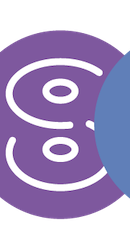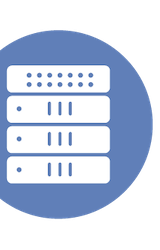In this LinkedIn Pulse article, Joep Piscaer analyzes Dell Technologies’ multifaceted approach to multi-cloud, which includes APEX Block Storage—a software-defined, mature storage solution that extends on-prem software to cloud providers, boosting performance and resilience—and the APEX Cloud Platform, a standardized on-prem hardware and software package that integrates cloud features and operations into Dell’s ecosystem. Piscaer commends Dell’s strategy of not directly competing with cloud service giants but rather expanding its ecosystem within the cloud and enriching the on-premises infrastructure with cloud-like functionalities, providing significant value to its existing customer base.
Doing Data Analytics Acceleration in Hardware With NeuroBlade
NeuroBlade sets its sights on becoming the NVIDIA of Data, showcasing its commitment to hardware-based solutions with its SQL Processing Unit (SPU) at Cloud Field Day. In this LinkedIn Pulse article, Joep Piscaer takes a look at the SPU, which is engineered to overcome the limitations of general-purpose CPUs and GPUs in data analytics by offering 30x acceleration at a fraction of the cost and power consumption, without the need to rewrite SQL queries. While NeuroBlade has already made strides with hyper-scale clients and OEM integrations, like with Dell, the potential for broader market reach through collaborations with cloud-based data analytics services remains an exciting prospect for the future.
Is Platform9’s Cost Optimization Worth Its Complexity?
At Cloud Field Day 19, Platform9 introduced their Elastic Machine Pool (EMP), a sophisticated solution dedicated to optimizing cloud costs through a unique utilization of AWS bare metal and a KubeVirt-based virtualization layer for Kubernetes. While EMP can provide significant savings for those with resource over-allocation, it introduces layers of technological complexity that could lead to technical debt, raising the question of whether the cost savings justify the added intricacy. Joep Piscaer elaborates on the delicate balance between addressing organizational inefficiencies with technical solutions, suggesting that while EMP has its merits, a holistic approach to understanding and resolving the root causes behind over-provisioning may yield more sustainable outcomes.
Why Data Sovereignty Matters to Scality
The classic duo of Tech Field Day delegates, Joep Piscaer and Ather Beg, dive into their experiences watching March’s Cloud Field Day presentations. This video in particular highlights the appearance by Scality, who detailed the importance of data sovereignty with their Ring scalable storage product. Watch the video to hear what Piscaer and Beg took away from the presentation, and be sure to view Scality’s Cloud Field Day presentation itself to understand the basis of the conversation.
Oracle Cloud Infrastructure Is Great (If You Need Just Need IaaS and Like Low Cost)
In this video, Joep Piscaer and Ather Beg discuss their time as delegates during March’s Cloud Field Day presentations. Specifically, the pair hone in on the appearance by Oracle, lauding the potential use cases for their public cloud infrastructure. Watch the video to hear exactly what delighted them about OCI, and check out Oracle’s presentation to shape your own opinions.
The Case for Continuous Documentation
In the latest post on his Virtual Lifestyle blog, Joep Piscaer makes the case for Continuous Documentation. He writes that Continuous Documentation is a concept that is inexplicably missing from our methodologies and that if we could correctly apply it we could reduce team workloads. While a delegate at Cloud Field Day, Joep got to see the VMware team present on how they’re working to improve the documentation experience for developers using their software. Joep writes that “VMware’s DX tools are a massive improvement on the Continuous Documentation front.” Be sure to check out Joep’s blog post as well as VMware’s presentations from Cloud Field Day!
Is VMware Cloud on AWS More Than a Landing Zone?
In this video, Joep Piscaer is joined by Raff Poltronieri and Ather Beg as they discuss their thoughts toward the Cloud Field Day event they attended as delegates in early April. Specifically, the trio hones in on VMware’s presentation regarding the VMware Cloud on AWS, voicing their concerns about limitations in use cases while also digging into the exciting integrations that can be leveraged. Be sure to check out the video to hear their thoughts, and also tune in to VMware’s Cloud Field Day presentation to help guide your own opinions towards the release.
Is Veeam’s Strategy Unsexy but Customer-Focused?
Delegates Joep Piscaer and Raff Poltronieri joined us for Cloud Field Day in March. Veeam Software presented at this event and discussed their cloud strategy, including insight on how they enable customers to manage their data across multiple platforms. In this video, Joep and Raff tackle the question, “Is [Veeam Software’s] strategy to support data protection across on-prem, cloud, SaaS and containers unsexy but customer-centric, or are they missing the point of cloud-native?”
Why the PX-Backup Container-Native Approach Is Crucial for Data Protection
On his blog, Virtual Lifestyle, Joep Piscaer writes about his sit-down with the folks from Pure Storage and PortWorx to discuss their PX-Backup product. As a delegate at Cloud Field Day earlier this year, Joep had the chance to see presentations from Pure Storage about the PX-Backup product as well as some of their other offerings. Be sure to check out Joep’s deep dive into what Pure Storage and Portworx are up to including their Cloud Field Day presentations!
vSphere 7 and Kubernetes – Should Customers Wait?
On this video from Keith Townsend, he talks with CTO Dose co-host Joep Piscaer about vSphere 7 and his impressions of the Kubernetes integration. Project Tanzu Grid is the updated branding for Project Pacific. They break down if VMware’s initial release lived up to the not inconsiderable hype. They also discuss if customers should be quick to latch onto Tanzu, or wait for further development. Watch as Keith and Joep recap their impressions from VMware’s Tech Field Day presentation.
vSphere 7 and Kubernetes – CTO Advisor Episode 118
In this CTO Dose Keith Townsend is joined by co-host Joep Piscaer to discuss vSphere 7 and his impressions of the Kubernetes integration, something Keith got to hear about in depth at Tech Field day . They discussed Project Tanzu Grid as the updated branding for Project Pacific, VMware’s effort to integrate Kubernetes into vSphere. They look at if VMware’s initial release lived up to the hype, and whether customers should adopt it right away, or wait for further development.
Sysdig Converges Monitoring and Security
Joep Piscaer heard from Sysdig at Cloud Field Day this past spring. In this post, he uses that presentation to consider how we evaluate application health, and how Sysdig helps companies solve the cloud-native visibility gap.
The Unconscious Choice for Multi-Cloud
Ownership of application and cloud architecture is constantly shifting and is becoming a shared responsibility of business, operations, developers, architects, and security. If you don’t guide the process of cloud consumption within your organization, you’ll end up with a disjointed multi-cloud. In other words: many different disconnected islands, each with incomplete, badly implemented, unaudited security and compliance standards. Joep Piscaer digs into the details in this piece.
Is VMware Project Pacific ‘Kubernetes Done Right’ for the Enterprise?
Joep Piscaer got details about VMware’s Project Pacific at Tech Field Day Extra at VMworld US 2019. This is VMware’s effort to re-architect ESXi and vCenter to natively use the Kubernetes APIs to drive platform operations. After hearing the details Joep is definitely excited for the new solution, as its far more than a simple bolt on to add a Kubernetes checkbox. This is a major recognition on the part of VMware where they were lacking, and shows a clear technical roadmap how they can take the lead in managing Kubernetes like they have with VMs.
Sysdig Solves the Instrumentation Problem Using eBPF
Sysdig presented for the first time at Cloud Field Day this past spring. Joep Piscaer was one of the delegates at the event and got to hear about the company’s solutions at length. In this piece, he looks at how Sysdig solves the problem of getting packet-level telemetry from containersnwithout accessing the underlying network stack. They do this using kernel-native instrumentation via eBPF to capture system calls and other OS events from containers, without having to create additional containers in the process. For Joep, that’s a key consideration.
How Datrium ControlShift Uses VMware Cloud on AWS for Cloud-Native Disaster Recovery
In this post, Joep Piscaer digs into Datrium’s ControlShift cloud-native disaster recovery solution. He previously heard from Datrium on this in detail at Cloud Field Day this spring. What makes ControlShift stand out for DR is the ability to cold start a recovery from the cloud. He runs through various recovery destinations and scenarios in the piece. Overall, he found it a very well thought out product.
How Datrium Deploys ControlShift Into the Cloud
Datrium returned to Field Day with a presentation at Cloud Field Day earlier this year. Joep Piscaer was one of the delegates at the event, and in this piece looks at the company’s Disaster Recovery runbook automation engine for virtualized workloads called ControlShift. Joep was impressed by how Datrium deploys the solution and reviews how to set up ControlShift in a customer AWS account.
LightStep: application performance management for the new stack
For Joep Piscaer, seeing LightStep [x]PM at Cloud Field Day this month at first seemed pretty routine. It seemed to be a run of the mill, if functional, Application Performance Management tool. But after watching their presentation, it becomes clear that [x]PM is different. It’s built by a team that knows how to deal with extremes of scale and concurrency from Google, but with the vision that most organizations don’t need to operate at a Google level of scale. In a world obscured by microservices, [x]PM offers something unique, a tool that tells a coherent story on transactions across the distribution and concurrency, abstracting away those complexities and surfacing the right information and insights.
SoftNAS helps solve legacy app and data inertia
Joep Piscaer defends SoftNAS after their recent Cloud Field Day presentation. He commends their work using older technology and understanding how the cloud benefits the average consumer using that older technology. SoftNAS doesn’t see the cloud as a collection of highly-integrated platform services, but simply as a datacenter as a service.
Hybrid cloud platforms look to liberate VMware, Azure tie-in
In this piece, Cloud Field Day delegate Tim Crawford was quoted on what he saw on Rovius Cloud from Accelerite at the event. Tim find the solution, which is built on the former CloudStack platform, easier to use and manage compared to OpenStack.







